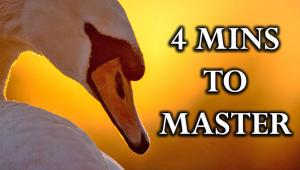On The Road: A New World: What I Look For Now
I learned photography in the film days, and when the huge change to digital came along, I changed not only my gear but the way I see. I used to have to see in terms of very specific criteria of what would work within the ISO range of my film and what the film could record in terms of light and shadow. Low ISOs meant I couldn’t get enough depth of field, or a tripod was needed, or I had to light something because there wasn’t enough information in pictures that had incredible shadow detail. High ISOs often meant an unacceptable level of grain and bad color rendition. As a result I passed up a lot of situations that got my attention but were beyond the capability of my film to capture.
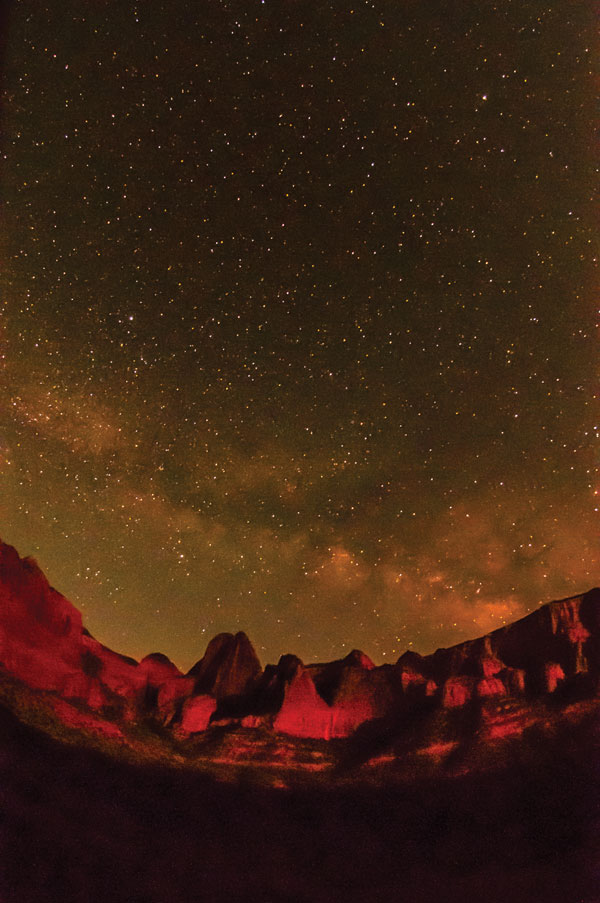
All Photos © Blaine Harrington
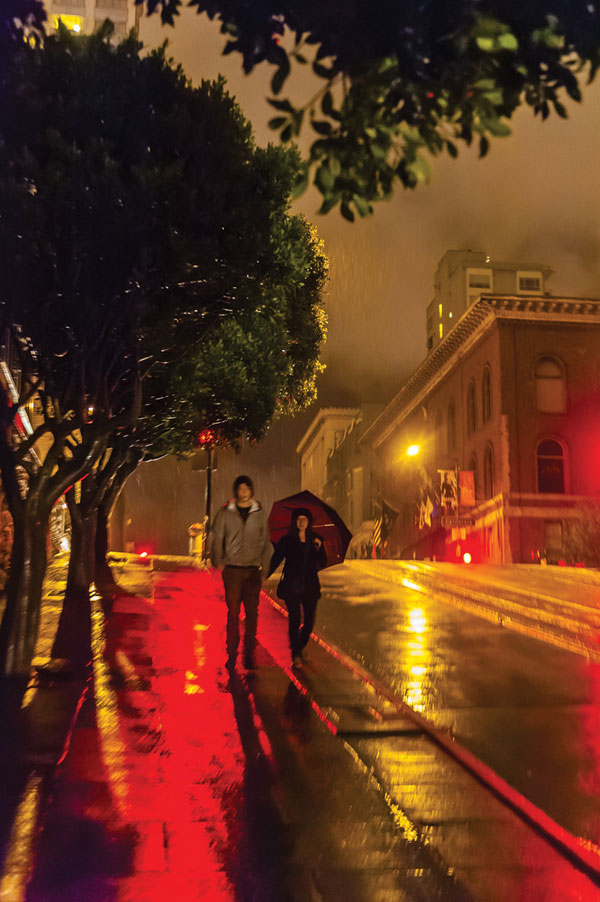
Today the sensors in my cameras can literally see more than I can, and noise in an image is either unnoticeable or manageable. So I don’t pass up anything—just the opposite: I get up earlier, stay later, and look harder and longer for subjects, scenes, and situations. Look harder and we’ll find more, and we’ll be able to tell better, more interesting, and more dramatic stories about the places we visit. Today our pictures can speak eloquently to the facts and the folklore of a place, and to its mood and spirit.
A very dramatic example is my photo of the night sky over Zion National Park in Utah. I was taking part in a Society of American Travel Writers photo shootout; it’s sort of a 24-hour-long scavenger hunt for specific photo subjects. I was in the last hours of the shoot, and all I could really see were the stars, but the camera was seeing the canyon silhouette, so I kept on shooting, checking the results, and shooting some more.
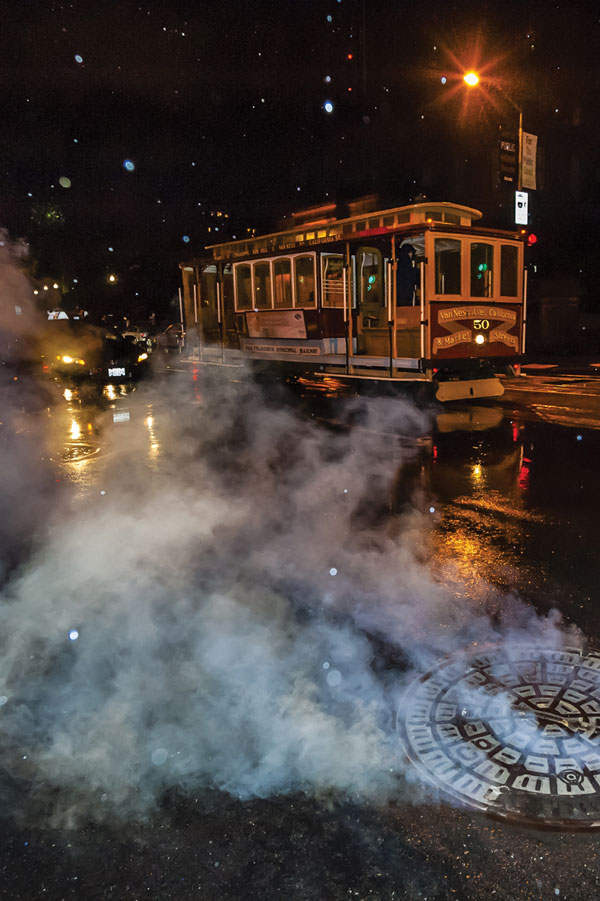
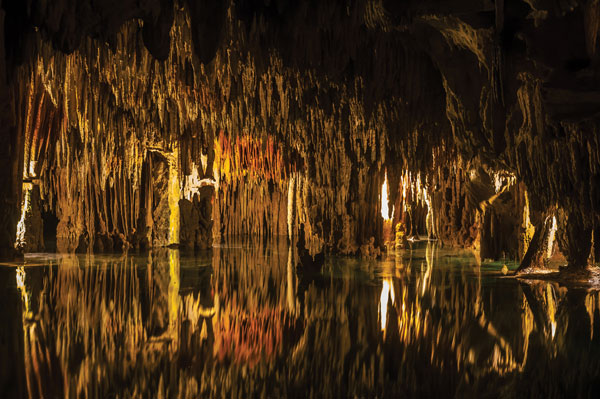
Then there are two photos taken at night in San Francisco. Both are images I wouldn’t even have tried to get before digital photography. In one it’s pouring rain, I’ve got no tripod, just a plastic poncho to keep the camera dry between shots, but I got the great reflections off the streets, the details in the shadows, and all that great light, held in by the cloud bank, bouncing around. In the other photograph I caught steam from a manhole, reflections, and even a starburst from a street lamp.
Photographs like these fit my style and purpose; they are photographs that were always there and I always wanted to take, and now I can take them. Now we all have these greater opportunities in a new, wider world of longer days of light and shadow, contrast, saturated colors, mood, and atmosphere.
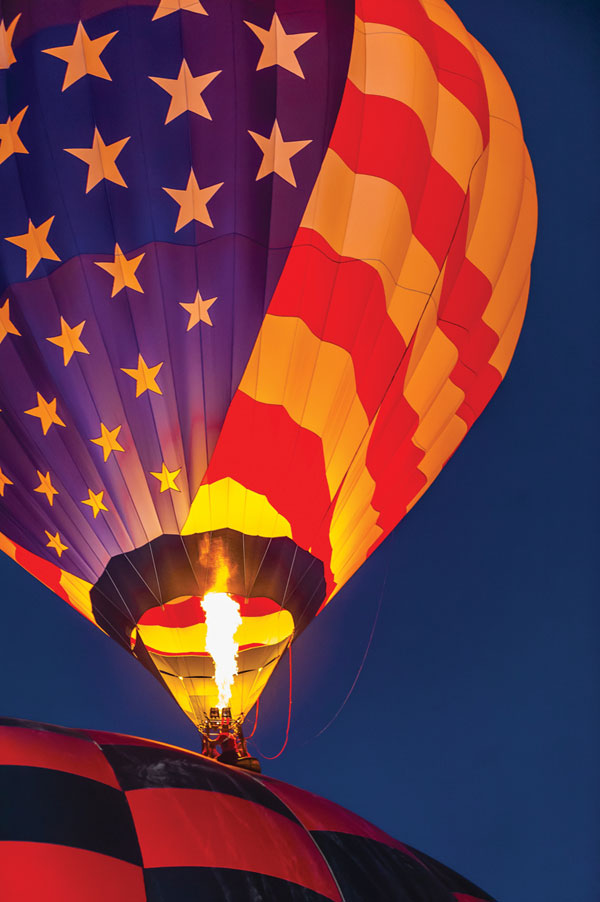
To take advantage of these new opportunities we have to work harder and search longer for the dramatic and perhaps even unique photographs. The truth is that on my travels I see many people who just fire away, eager to get a photo or two without really stopping to study the possibilities. The camera in our hands is an incredible learning tool because we can see right away what’s working and what’s not—and once in a while there’s going to be a surprise when we capture something that we weren’t even aware was there. And if the camera is the learning tool, for the travel photographer the world is the classroom.
Let’s go as far as the technology—and all the hours of the longer day—will take us.
Travel and location photographer Blaine Harrington has twice won the Society of American Travel Writers’ Travel Photographer of the Year award. In a 40-year career he’s traveled to over 70 countries and taken over a half-million images. Some of those photographs can be seen at www.blaineharrington.com.










